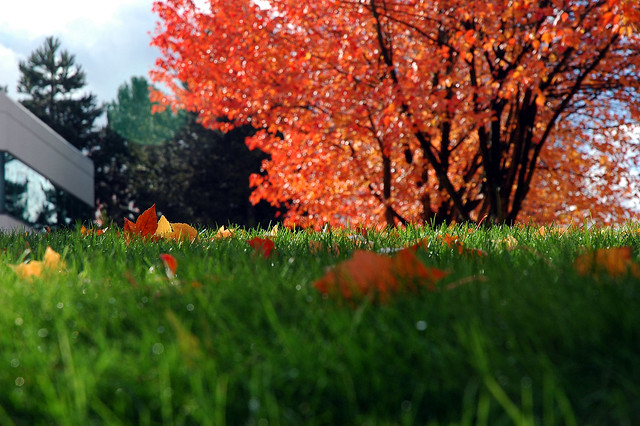How Fertilization Can Help Your Lawn This Fall

September is upon us and that means it’s time to start thinking about what to do with your lawn and garden this fall. One of our most important tips on how to make grass green and healthy is to make sure you fertilize your lawn in the fall. Here’s some key points on how fall fertilization can benefit your lawn:
Fall fertilization: Why it’s too important to pass over
With the start of September comes one of the most popular seasons of all: fall.
“From a horticultural standpoint, it’s the best time to feed your lawn and make sure the nutrient levels are at their optimum growing conditions,” says Chuck Whealton, region manager with Ruppert Landscape’s landscape management division. “It’s also the best time to do lawn renovation. So, if you’re doing some overseeding of those areas, the best time to get germination of new grass is in the fall as well.”
Whealton explains that with cool-season grasses, fall is an especially important time to fertilize for the following reasons:
• Soil temperatures are relatively warm
• Air temperatures are beginning to cool down
• Typically, precipitation is better and more common in the fall
• It gives grass the opportunity to use the nutrients it’s stored to grow root systems better
• Increases cold hardiness
• Helps grass store energy reserves in the way of carbohydrates
Why fall fertilization is important
Fall fertilization is one of the most important aspects of good lawn health, but many people may be tempted to opt out of it to save a little bit of cash.
According to Whealton, this could end up costing them more than it would have to do the initial fertilizing.
“A good offense is better and usually less expensive than defense,” Whealton says. “Something is going to grow there, and we’d rather it be what we want, the desirable turf, than weeds. Once you have weeds, then you have to kill the weeds. We would rather play offense and create a healthy, good standing turf than to have to constantly be battling with herbicides and weed control.”
Whealton also recommends encouraging good cultural approaches to lawn care, such as establishing good mowing heights and frequencies, introducing new varieties of seed or turf, aerating, monitoring pH levels, optimizing nutrient levels and adding in organic materials from time to time.
Read the full article at totallandscapecare.com
Article source here: How Fertilization Can Help Your Lawn This Fall
Comments
Post a Comment